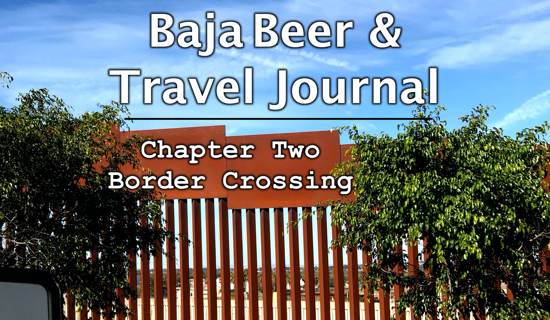
Beer Trumps Planning
As we got closer into LA – destination being the beautiful town of Orange County’s Brea to visit friends, we realized how much closer we were to crossing the border into Mexico to head south to destinations unknown in Baja California. We also came to the daunting realization that we had done nothing yet to solidify our plans of entering Mexico. It was much more important to research the local beer scene.
A couple of must mentions are Bottle Logic Brewing in Anaheim and The Bruery in Placentia. Both brilliant, both more important than researching Mexico at that moment. And while not planning much is typical for our travel style, I do not, however, recommend it when driving from one country into another.
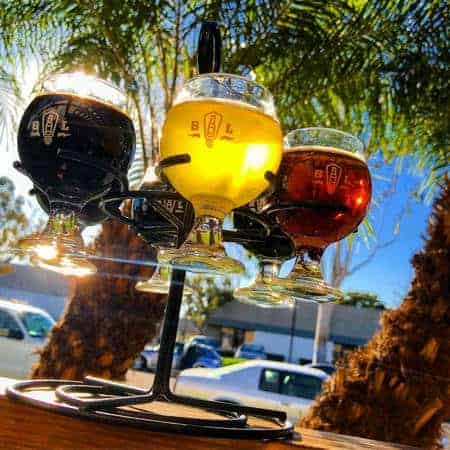
The thing is, is that you could do just that, not plan much past the day to day, but being in another country, even if it is just Mexico, you need to follow certain rules. We take advantage of those rules in the US because we know them well and we already have all the legalities and technicalities of driving a vehicle, using a cell phone, and spending money tucked away in our brain.
You need these in Mexico, too. And that takes planning. We’ve been to Mexico plenty of times: Mazatlan, Cancun, Progreso, Merida, Nogales, Tijuana. But we’ve never driven in Mexico, let alone driving an RV and crossing the border in said RV.
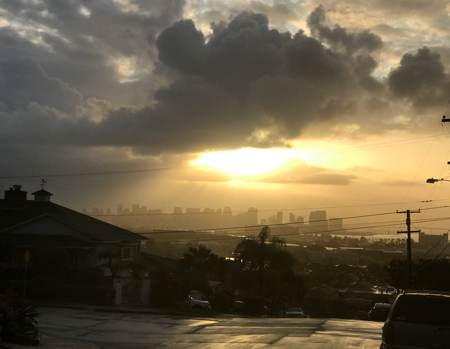
Mexico Border Crossing in an RV
We crossed the border on a sunny San Diego morning around 10:30 (good timing or all the breweries in San Diego might have delayed us by a few days) and with a few issues, but nothing major, we were driving through Tijuana about three hours later. The only documentation they asked for was our passports and RAIF’s registration. And apparently, it is different for everyone we’ve talked to before and after our border crossing. So, on that note, take everything we say with a grain of salt. You know that spice that makes margaritas, well…margaritas.
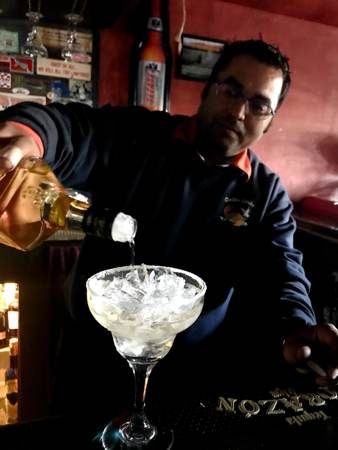
Official Documents
Great, you’re all set, right? WRONG! If you get into an accident or get pulled over or have any health issues, you need to make sure you are covered for those what-if’s just like you are covered for those at home.
Vehicle Insurance and Registration
Your vehicle insurance that covers you so well in the States isn’t going to cover crap in Mexico. Well, it may cover you on your end for repairs etc, but it doesn’t meet the requirements of the Mexican government. You need Mexican insurance to drive in Mexico. Go figure.
We found ours through Baja Bound. We have no idea if it’s the cheapest or the best, but it was recommended, it has the proper amounts of coverage needed and then some, it was easy and you can do it all online. We also found their customer service very helpful. If you are driving in Baja California, Baja California Sur and the free zone in Sonora, then that is all you need: Mexican auto insurance, your driver’s license, and your vehicle registration. (We also kept our US insurance, not sure if it was necessary or not, but decided it was best to keep it active.) If you are driving outside of those areas, you will also need a vehicle permit (aka Temporary Import Permit).
PRO TIP: Though we were only going to be in Baja for a couple months, we found it cheaper to buy a six-month policy than pay the daily rate.
Health Insurance
As for health insurance, you’ll need to check with your health insurer to see if they cover anything while in Mexico. More than likely, it’ll only cover emergencies, and it is recommended to have some sort of travel insurance to help offset costs. There are a variety companies that offer travel insurance, so do your research, and find what fits you. When I went to Kenya, I opted into purchasing travel insurance as well as an emergency evacuation plan. In Mexico, we opted into nada. It’s up to you.

FMM Card AKA Tourist Card
Not up to you. You need an FMM card (Forma Migratoria Multiple), often called a ” tourist card.” Although you could choose not to purchase it, if asked for it and you don’t have it, your travel plans may call for an additional detour to a border town. The border patrol agents probably won’t ask for it at the border, but if you get stopped in country and you don’t have it or it’s not stamped, you’ll be heading back to the border to get one. To prevent all this crap, we found it easy to purchase online. Click here to do so now. Click here to check out Baja Bound’s informative site for more info on purchasing in person or for more info on the FMM card itself. It’s about $24 US dollars per person.
Remember, they will not ask for this when you cross the border, but you still need to show it to them so that they can stamp it. If you forget, you will be heading back to the border for the stamp. If you completed your form online, be sure to also print out the receipt showing that you paid already. We learned this lesson while presenting our documents. Thankfully we had an email copy of our receipts, which they instructed us to forward to them via their email. So we had to walk back out to RAIF, find them on the email, send it to them, then head back inside. We went back to the same booth, it was a different border patrol person, and go figure, he didn’t even ask for the receipt. Aaah, the lovely government!
As an American or a Canadian driving across the border, you need an FMM card regardless of how long you stay; however, if you are only staying for seven days or less, then there is no cost for this card. But you still need one. They don’t ask for it, and there’s no place to stop and get it stamped when you are simply being waved through, so just make sure you know ahead of time where to go; or be brave, practice your Spanish, and ask the border patrol that’s kindly waving you through.
PRO TIP: If you are driving in Baja and plan to take the ferry from La Paz or elsewhere across to mainland Mexico, we have learned that you must have your stamped FMM card in order to purchase a ferry ticket. So you definitely don’t want to have an unplanned return to the border before hopping on a ferry. And remember, if you are taking your vehicle on the ferry to drive in mainland Mexico, you also need the Temporary Import Permit previously mentioned in the insurance section.
Passport
Ok, I know it’s been years, as of 2009 to be exact, since the Western Hemisphere Travel Initiative (WHTI) was implemented – that’s the law stating that you need a passport to enter Mexico whether by sea, land, or air – but just to be clear, you need a passport when crossing the border. They may or may not ask for it when going into Mexico, but they sure as hell will when you want to get back into the U.S. Don’t forget your passport!
The Three Hour Border Crossing
I mentioned a three hour border crossing tour. It really wasn’t that big of a deal, just inconvenient. The lesson to all of this is to be prepared for anything and be prepared to wait. Being in an RV, we knew we would probably be checked before crossing. We crossed at the San Ysidro El Chaparral border crossing from San Diego into Tijuana. Stay in the right lanes; there are no signs for this, but just do it, unless you really want the adventure of backing up amidst several lanes of cars so you can get to those right lanes when the agents stop you. We were waved over, asked for our passports and vehicle registration and then instructed to drive through this futuristic looking piece of machinery. In reality, it was an Xray for large vehicles. After being scanned, we waited for about 10 minutes. An agent came out, looked inside RAIF for a bit, and then asked us to remove all of our books from the RV and place them on the sidewalk. Really, the sidewalk? Was this a yard sale?
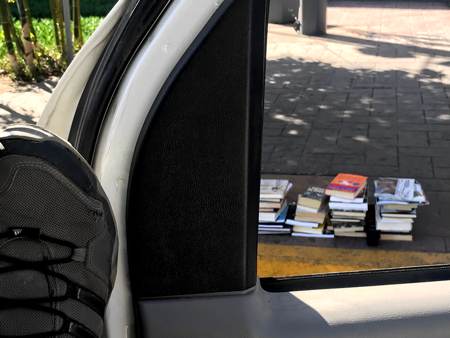
It was a bit humorous. Several passenger buses came through and while the passengers were waiting for the buses to be cleared, they were just as curious about the books on the sidewalk as we were. Apparently this doesn’t happen too often. We never found out why they didn’t like our book choices, but whatever was scanned in our bookshelf raised a red flag for somebody. (Maybe it was my book about the history of the Taliban.) Back through the X-ray again, but this time the wait wasn’t ten minutes, more like 60. After an hour of babysitting our sidewalk books, we finally got the ok to put our books back where they belong, then in we went to get our FMM cards stamped, (you already know the story on that) we were on our merry way. We just found it quite entertaining that of all the places in our RV they could have searched, they were concerned the most about our book storage. The world will never know.
This border crossing or that one?
Since we were in San Diego visiting a friend right before crossing the border, it made sense for us to cross at SanYsidro into Tijuana, but when possible it sounds like the best pace to cross is Tecate (maybe they like books more there) where fellow RV’ers have mentioned they were basically waved through and if stopped, agents glanced in the RV and sent them on their way without even asking for a passport. But remember, you still need that FMM card stamped, and from what I understand, it’s easier to park on the US side in Tecate, walk across with your online forms and receipts printed out, get stamped, then walk back across to your vehicle and then drive across. Makes perfect sense, right?
Our friends as Jeepsies crossed the border at Tecate. Click here to read all about their Tecate border crossing experience. One place to be: Baja, and many ways to get there. What will you choose?
Roads? Where we’re going, we don’t need roads!
Driving in Tijuana and Ensenada are basically like driving through any larger city. There are traffic lights and stop signs and all the other signs that block up the scenery. The main difference though is the locals don’t always come to a complete stop, they will pass you when you are least expecting it, and potholes can surprise the crap outta you at anytime. Now, just because the locals don’t come to a complete stop does not make it ok for you to do the same. Stop. Completely. We have heard that the local police love to catch those American and Canadian tourists running stop signs. Being in a foreign country is enough of an adventure without getting pulled over for running a stop sign. They are small; pay attention. I missed a couple while maneuvering around a few side streets. Speaking of side streets, use caution. Some of them are very similar to what we deem as 4WD roads in the States.
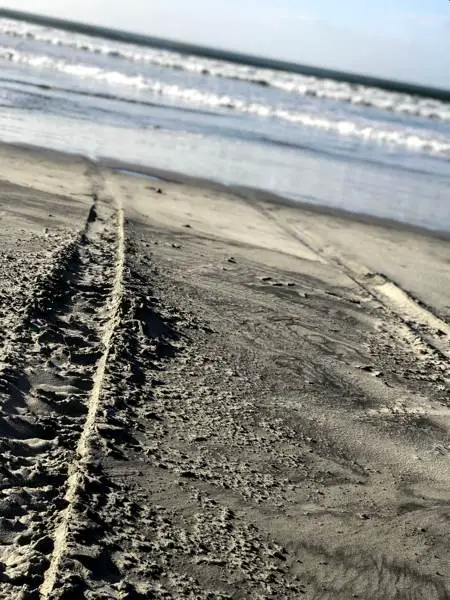
Deciding to drive through Tijuana for the moment with plans of coming back to visit the burgeoning Tijuana craft beer scene later, we found out very quickly that Mexican drivers do not go the speed limit. At any rate, 1D is the main highway heading south from Tijuana to anywhere you are heading south. This is a toll road, and for us and our RV it was around $4 US each stop. Getting off the toll road after the second stop, we continued heading south on Mexico 1, no longer a toll road, slower speeds, but still a very doable road. It is my understanding that if you stay on 1D, which most people do, you will come across a total of four toll collection booths, for us that would have been a total of around $16. We are cheapskates and knowing that Mexico 1 was still a decent road, we didn’t want to pay any more than the $8 we had already dished out.
Choose the road you are comfortable with. And unlike the States, you only have two choices at this moment. It’s actually a bit refreshing, no FOMO here.
Finally…Beer!
Famished, tired, and ready to find a spot for the night, no driving after dark here. Those potholes and topas (speed bumps) rise up as if from nowhere, and once they have wreaked havoc on your rig, they go back to the depths of where they came from, RV road hell. I swear I heard their laughter dissipating into the night just after I slammed on my brakes trying not to go airborne.
Form border crossing to beachfront property at the K58 Campground for the night, it was time to settle in with some fellow travelers. Spotting a bar just down the way, you know we ended our first day in Baja with a beer (yes, our snobby beer tastebuds fully accepted the local flavors of Corona and Pacifico, at least for the first night). Cheers!
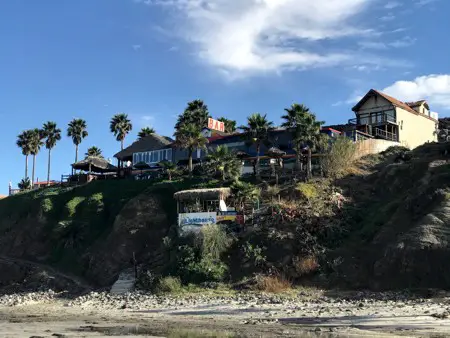
Just from driving through Tijuana, finding our way around Ensenada and our first two Baja campsites, we’ve learned a lot. Click here to read the next chapter.
Click here to read all the Baja Beer and Travel Journal Chapters. More will be added often.
Chapter One – Baja Bound
Chapter Two – Mexico Border Crossing in an RV
Chapter Three – Tijuana to Ensenada

Very helpful – thank you! I was under the impression we’d need passports if we wanted to cross the border. So apparently not?
You definitely need passports. They may or may not ask for them when crossing into Mexico but you definitely need them when coming back into the U.S.
“The only documentation they asked for was our passports and RAIF’s registration.” I did say this in the article, but I will make it more obvious. Seriously, thanks for noticing. I will make this a part of the official documentation section.